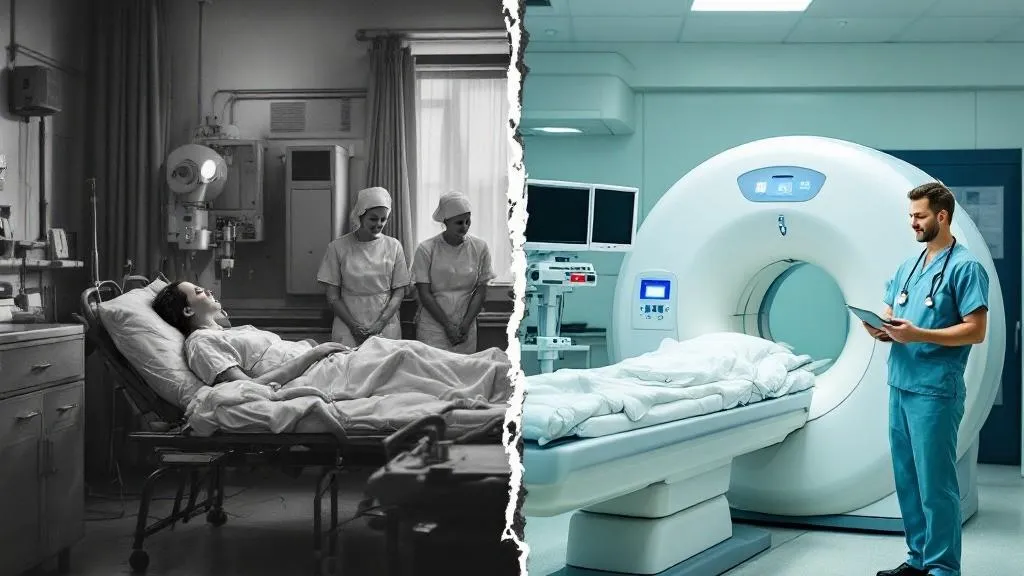Seven Decades of Documented Medical Harm: Why Have
We Not Improved?
Date published: January 2, 2025

Medical harm has been a known issue in healthcare for over 70 years. Despite advancements in technology, increased awareness, and numerous safety initiatives, patient safety remains a critical concern. This article explores the persistent problem of medical harm, the historical context, the challenges faced, and the way forward to ensure safer healthcare systems.
Since the mid-1950s, medical errors and patient harm have been repeatedly highlighted in both medical literature and mainstream media (Millenson, 2002). The landmark study "To Err is Human" by the Institute of Medicine in 1999 brought significant attention to the issue, estimating that medical errors resulted in 44,000 to 98,000 unnecessary deaths annually in the U.S.
Medical errors have become an even greater issue than previously recognized, now identified as the third leading cause of death, following cancer and heart disease. However, evidence of under-reporting suggests that medical mistakes could potentially rank as the second or even the leading cause of death.
Persistent Challenges
Underestimation and Reporting Issues
Medical errors have historically been underestimated. A more recent literature review suggested preventable deaths are between 250,000 and 400,000 annually in the U.S. alone (Makary & Daniel, 2016). Reporting mechanisms for medical errors remain inadequate, with many incidents going unreported due to fear of litigation or professional repercussions.
Systemic Issues
Medical harm is often a result of systemic failures rather than individual negligence. This includes issues such as poor communication, inadequate staffing, and lack of standardized protocols. The Joint Commission has consistently reported that nearly 70% of patient harm events are caused by communication breakdowns. Many healthcare settings lack a culture of safety where staff are encouraged to report errors without fear of blame.
Inconsistent Implementation of Solutions
Evidence-based solutions exist for many types of harm, such as surgical safety checklists and protocols to prevent hospital-acquired infections. However, their implementation is inconsistent across healthcare settings due to varying resources and commitment levels.
Complex Healthcare Systems
The complexity of modern healthcare systems, with numerous professionals involved in a patient's care, increases the risk of errors. Coordination among different healthcare providers is often lacking.

Recent Findings
and Disparities
A 2023 study highlighted that over 500,000 Americans are permanently disabled or die annually due to misdiagnosis, with significant disparities in harm based on age, gender, and race (Newman-Toker et al., 2023). These findings underscore the need for targeted interventions to address these inequities.
The Way Forward
Leadership and Policy Change
Federal leadership is crucial for creating a nationwide initiative to support the implementation of safety solutions and to sustain improvements over time. Policies should incentivize healthcare providers to adopt evidence-based practices and ensure transparency in reporting.
Empowering Patients
Patients should be empowered to be active participants in their care, with clear communication from healthcare providers about their treatment and potential risks.
Leveraging Technology
Advances in information technology, such as electronic health records and AI, offer opportunities to improve error detection and enhance patient safety.
Building a Culture of Safety
Healthcare organizations must foster a culture of safety where errors can be reported and addressed without fear of retribution. Training programs that focus on teamwork and communication are essential.

While medical harm has been a documented issue for decades, the path to improvement is clear. By addressing systemic issues, leveraging technology, and fostering a culture of safety, we can make significant strides in reducing medical harm. The healthcare industry must prioritize patient safety to prevent avoidable harm and ensure trust in healthcare systems.
For more insights and resources on patient safety, visit Dr. Julie Siemers' website.
#patientsafety #healthcareindustry #health #continuousimprovement #healthandsafety
Seven Decades of Documented Medical Harm:
Why Have We Not Improved?
Date published: January 2, 2025

Medical harm has been a known issue in healthcare for over 70 years. Despite advancements in technology, increased awareness, and numerous safety initiatives, patient safety remains a critical concern. This article explores the persistent problem of medical harm, the historical context, the challenges faced, and the way forward to ensure safer healthcare systems.
Since the mid-1950s, medical errors and patient harm have been repeatedly highlighted in both medical literature and mainstream media (Millenson, 2002). The landmark study "To Err is Human" by the Institute of Medicine in 1999 brought significant attention to the issue, estimating that medical errors resulted in 44,000 to 98,000 unnecessary deaths annually in the U.S.
Medical errors have become an even greater issue than previously recognized, now identified as the third leading cause of death, following cancer and heart disease. However, evidence of under-reporting suggests that medical mistakes could potentially rank as the second or even the leading cause of death.
Persistent Challenges
Underestimation and Reporting Issues
Medical errors have historically been underestimated. A more recent literature review suggested preventable deaths are between 250,000 and 400,000 annually in the U.S. alone (Makary & Daniel, 2016). Reporting mechanisms for medical errors remain inadequate, with many incidents going unreported due to fear of litigation or professional repercussions.
Systemic Issues
Medical harm is often a result of systemic failures rather than individual negligence. This includes issues such as poor communication, inadequate staffing, and lack of standardized protocols. The Joint Commission has consistently reported that nearly 70% of patient harm events are caused by communication breakdowns. Many healthcare settings lack a culture of safety where staff are encouraged to report errors without fear of blame.
Inconsistent Implementation of Solutions
Evidence-based solutions exist for many types of harm, such as surgical safety checklists and protocols to prevent hospital-acquired infections. However, their implementation is inconsistent across healthcare settings due to varying resources and commitment levels.
Complex Healthcare Systems
The complexity of modern healthcare systems, with numerous professionals involved in a patient's care, increases the risk of errors. Coordination among different healthcare providers is often lacking.

Recent Findings and Disparities
A 2023 study highlighted that over 500,000 Americans are permanently disabled or die annually due to misdiagnosis, with significant disparities in harm based on age, gender, and race (Newman-Toker et al., 2023). These findings underscore the need for targeted interventions to address these inequities.
The Way Forward
Leadership and Policy Change
Federal leadership is crucial for creating a nationwide initiative to support the implementation of safety solutions and to sustain improvements over time. Policies should incentivize healthcare providers to adopt evidence-based practices and ensure transparency in reporting.
Empowering Patients
Patients should be empowered to be active participants in their care, with clear communication from healthcare providers about their treatment and potential risks.
Leveraging Technology
Advances in information technology, such as electronic health records and AI, offer opportunities to improve error detection and enhance patient safety.
Building a Culture of Safety
Healthcare organizations must foster a culture of safety where errors can be reported and addressed without fear of retribution. Training programs that focus on teamwork and communication are essential.

While medical harm has been a documented issue for decades, the path to improvement is clear. By addressing systemic issues, leveraging technology, and fostering a culture of safety, we can make significant strides in reducing medical harm. The healthcare industry must prioritize patient safety to prevent avoidable harm and ensure trust in healthcare systems.
For more insights and resources on patient safety, visit Dr. Julie Siemers' website.
#patientsafety #healthcareindustry #health #continuousimprovement #healthandsafety
